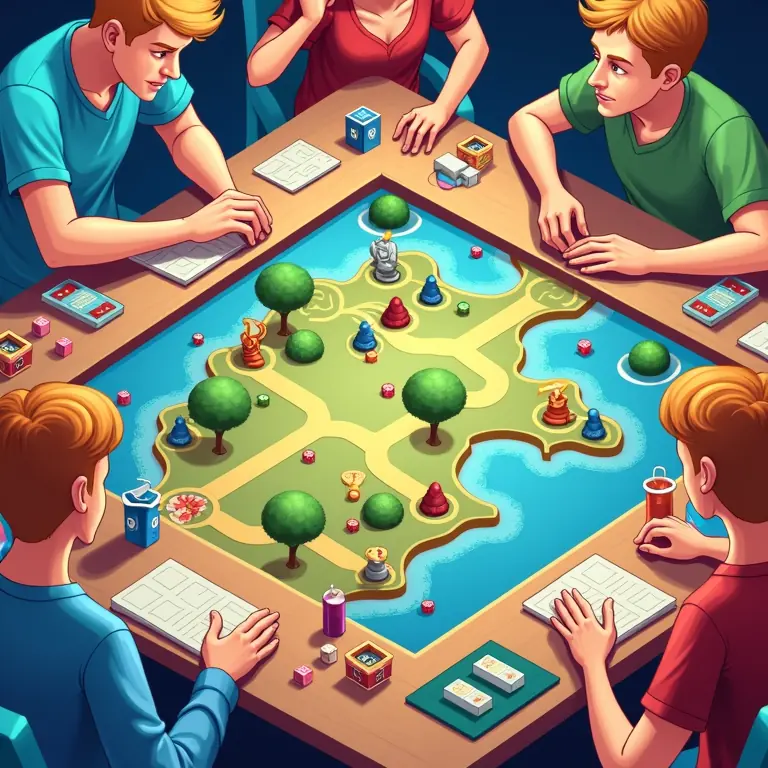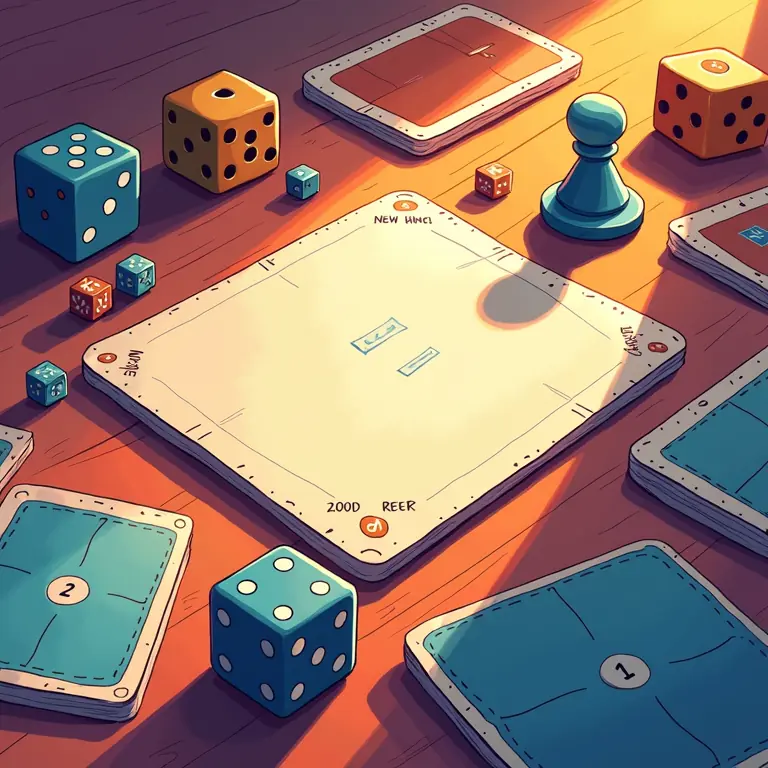Build a Better Board Game: A Friendly Guide to Tabletop Game Design
So, you want to design a board game? Excellent! You’re joining a vibrant community of creators, dreamers, and puzzle-masters. It’s a rewarding process, but it can also seem daunting. This guide is here to break down the process into manageable steps, offering friendly advice and practical tips to help you craft a tabletop experience people will love. We’ll cover everything from initial concepts to playtesting, and even a little bit about getting your game out into the world.
Phase 1: The Spark – Concept & Theme
Every great game starts with an idea. This isn’t necessarily a fully-formed ruleset, but a core concept, a ‘what if?’ that excites you.
Finding Your Core
What kind of experience do you want to create? Do you want players to feel like cunning merchants, intrepid explorers, powerful wizards, or something else entirely? Think about the *feeling* you want to evoke. Consider these starting points:
- Theme: What’s the setting and story? Fantasy, sci-fi, historical, abstract? A strong theme can provide a framework for your mechanics.
- Mechanics: What will players *do* in the game? Dice rolling, card drafting, worker placement, tile laying, area control?
- Player Interaction: How will players interact with each other? Competitive, cooperative, or something in between?
Don’t be afraid to brainstorm wildly. Write down *everything*, even if it seems silly. You can refine later. A useful exercise is to combine seemingly disparate ideas. “What if we combined deck-building with farming?” “What if we had a worker placement game set in a post-apocalyptic underwater city?”
Theme & Mechanics Harmony
Ideally, your theme and mechanics should complement each other. A game about building a railroad should feel different from a game about battling dragons. Mechanics should *support* the theme. If you’re making a game about exploring a dangerous jungle, mechanics that involve risk management and resource scarcity will feel more thematic than, say, simple dice rolling.
Phase 2: The Blueprint – Core Mechanics & Rules
Now it’s time to flesh out your idea. This is where you start to define the core rules and mechanics that will drive the gameplay. Don’t aim for perfection yet; focus on creating a working prototype.
Defining Core Mechanics
Your core mechanic is the central action or system that players will repeat throughout the game. Examples include:
- Dice Rolling: Simple, random, and easily understood.
- Card Drafting: Players select cards from a shared pool, building a hand or tableau.
- Worker Placement: Players assign limited “workers” to different actions on the board.
- Tile Laying: Players place tiles to build a map or pattern.
- Area Control: Players compete to control areas on the board.
Choose a mechanic (or a combination) that best suits your theme and desired player experience. Consider how the mechanic will create interesting decisions for players.
Basic Ruleset
Start writing down the basic rules. This doesn’t need to be a polished rulebook, but a clear outline of how the game works. Include:
- Game Setup: How do players prepare the game?
- Player Turn: What can a player do on their turn?
- Winning Condition: How does a player win the game?
- Key Terminology: Define any unique terms used in the game.
Prototyping: Embrace the Ugly
This is *crucial*. Don’t get bogged down in beautiful artwork or fancy components. Use index cards, dice, pawns from other games, and anything else you can find. The goal is to create a playable version of your game as quickly as possible. Think of it as a rough draft.
Phase 3: Playtest, Playtest, Playtest!
Your prototype is ready! Now comes the most important part: playtesting. This is where you discover what works and what doesn’t. Be prepared to iterate and revise your rules based on feedback.
Finding Playtesters
Don’t just playtest with your friends and family (although they’re a good starting point). Seek out people who aren’t afraid to give honest criticism. Local game stores, board game meetups, and online forums are great places to find playtesters.

Running a Playtest
Here’s how to get the most out of a playtest:
- Explain the Rules Clearly: Before you start, explain the rules to your playtesters.
- Observe, Don’t Intervene: Let players play the game without your constant guidance. Watch how they interact with the mechanics.
- Take Notes: Record everything! What rules are confusing? What decisions are players making? Where are the bottlenecks?
- Ask for Feedback: After the game, ask playtesters for their honest opinions. What did they enjoy? What did they dislike? What felt unfair or unbalanced?
Iteration & Refinement
Based on the feedback you receive, revise your rules and mechanics. This is an iterative process. You’ll likely go through many rounds of playtesting and refinement before you’re satisfied with the result. Don’t be afraid to make big changes. Sometimes, the best improvements come from completely rethinking a core mechanic.
Phase 4: Polishing & Balancing
Once you have a solid core gameplay loop, it’s time to focus on polishing and balancing the game. This involves fine-tuning the rules, adjusting numbers, and ensuring that all players have a fair chance of winning.
Balancing the Game
Balance is crucial for a fun and engaging game. Here are some things to consider:
- Player Powers: If players have unique abilities, make sure they are roughly equal in power.
- Resource Management: Ensure that resources are neither too scarce nor too plentiful.
- Randomness: Control the level of randomness in the game. Too much randomness can feel unfair, while too little can make the game predictable.
- Winning Strategies: Make sure there are multiple viable paths to victory.
Rulebook Clarity
A clear and concise rulebook is essential. Use simple language, provide plenty of examples, and include diagrams or illustrations where necessary. Consider having someone who hasn’t played the game read through the rulebook and provide feedback on its clarity.
Phase 5: Components & Presentation
Now it’s time to think about the physical components of your game. While gameplay is paramount, attractive and functional components can significantly enhance the player experience.
Component Selection
Choose components that are appropriate for your theme and gameplay. Consider things like:
- Cards: Standard playing card size, linen finish?
- Dice: Custom dice with unique symbols?
- Board: Foldable board, mounted board?
- Tokens: Wooden tokens, plastic miniatures?
Art & Graphic Design
Visual appeal matters. Consider hiring an artist to create artwork that captures the theme of your game. Pay attention to graphic design – clear typography, intuitive iconography, and a consistent visual style are all important.
Beyond the Prototype: Getting Your Game Out There
You’ve got a polished game! What now? Here are a few options:
- Self-Publishing: You handle all aspects of production, marketing, and distribution. This gives you full control but requires significant effort and investment.
- Pitching to Publishers: Submit your game to established board game publishers. They handle production and distribution, but you’ll typically receive a royalty on sales.
- Crowdfunding: Use platforms like Kickstarter or Gamefound to raise funds for production. This can be a great way to build a community and generate buzz.
Resources & Further Learning
Here are some resources to help you on your game design journey:
- BoardGameGeek (BGG): A massive online community for board game enthusiasts. [https://boardgamegeek.com/](https://boardgamegeek.com/)
- The Game Design Round Table Podcast: A podcast featuring interviews with game designers.
- Ludology Podcast: A podcast focusing on the theory and analysis of game design.
And don’t forget to explore other games! Analyze what makes them fun, and try to incorporate those elements into your own designs.
If you are interested in learning more about programming, check out building a basic drum machine. If you want to understand how to allocate your resources, you might enjoy reading about impact investing. And if you’re thinking about levels, you could try designing a rhythm game level.


Discussion about this post